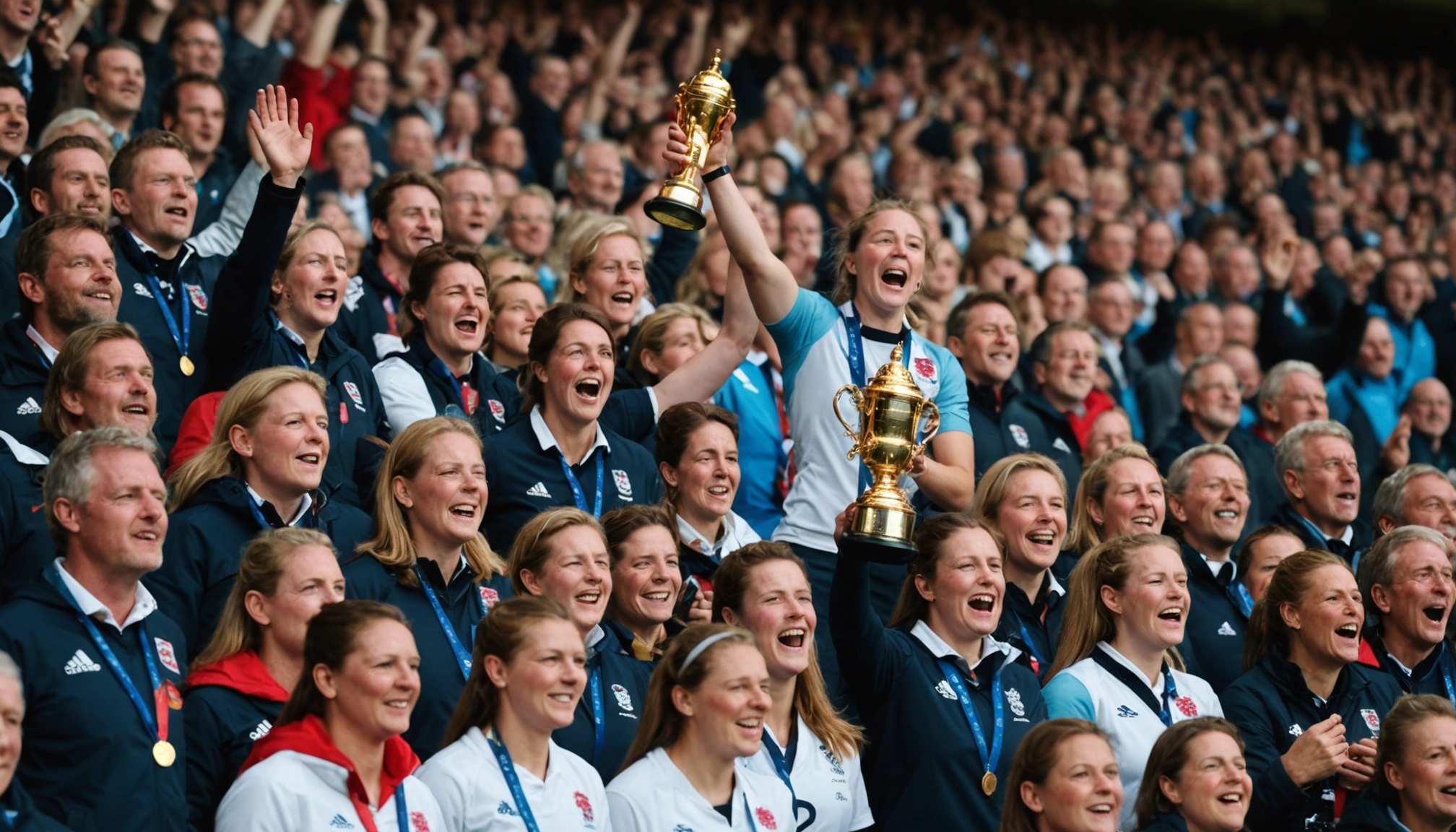How England 2025 Became The Biggest Women’s Rugby World Cup Ever
Discover how England 2025 set new attendance records and transformed the Women's Rugby World Cup into the sport's biggest and most accessible event ever.

By Editorial
Introduction To The Record-Breaking England 2025 Women’s Rugby World Cup
The England 2025 Women’s Rugby World Cup has firmly established itself as the largest and most successful tournament in the history of women's rugby. With unprecedented attendance figures and an engaging fan experience, this event has not only broken records but also elevated the profile of women’s rugby to new heights. Let’s explore how the tournament’s unique approach to accessibility, scheduling, and promotion created this spectacular success story.
Setting New Attendance Records At Twickenham And Beyond
The tournament reached a historic peak with the final held at Twickenham’s Allianz Stadium, boasting a sold-out crowd of 82,000 – the largest ever for a women's rugby match. This surpassed previous attendance records and marked a watershed moment for the sport. From the opening game, England’s clash with the United States drew 42,723 fans, breaking the prior record set in 2022 for the best-attended Women's Rugby World Cup match. Overall, 440,000 tickets were sold across 32 matches, representing nearly 94% capacity utilisation, a remarkable feat that highlights the tournament’s widespread appeal.
Strategic Pricing And Scheduling To Maximise Fan Engagement
One of the key drivers behind the tournament’s success was its competitive pricing model. Ticket prices started at just £10 for adults and £5 for children, making it affordable for families and younger fans. Moreover, the organisers ensured that 95% of England’s population was within a two-hour travel distance of a venue, making the matches highly accessible. Unlike previous men’s Rugby World Cups, where some pool matches were scheduled on weekday evenings, every game in this tournament (except the Friday night opener) took place at weekends. This scheduling made it easier for fans to attend, boosting attendance and atmosphere.
Innovative Double-Header Weekends And Spotlighting Lesser-Known Teams
To maintain strong attendance even for less high-profile fixtures, the tournament introduced double-header weekends. This meant that multiple matches were played in the same city on the same day or weekend, creating a festival-like atmosphere and encouraging fans to watch more than one game. For example, Brazil, a team with lower international recognition, played all their pool matches alongside higher-profile teams like Ireland, New Zealand, and France. This strategic pairing helped raise the profile of emerging teams and increased interest across the board.
Connecting Fans With Players Through Digital Content
Off-field storytelling played a vital role in engaging fans. Content creators were embedded with all teams to share personal stories and behind-the-scenes moments, fostering a deeper connection between players and supporters. A standout example was a TikTok video featuring Australia's 18-year-old full-back Caitlyn Halse being lifted into the stands by her father during a match in York. This clip amassed over 13 million views, illustrating the power of social media in promoting women's rugby and attracting a new generation of fans.
Focusing On Rugby Hotbeds For The Knockout Stages
The knockout stages were strategically hosted in rugby heartlands, further boosting attendance. Quarter-finals were split between Exeter’s Sandy Park and Bristol’s Ashton Gate, while both semi-finals took place in Bristol, drawing a combined crowd nearing 50,000. This focus on traditional rugby areas ensured passionate supporters filled the stadiums to witness the tournament’s most critical fixtures. The final’s attendance even surpassed the record set earlier in 2023 when 58,498 fans watched England defeat France in the Six Nations at the same venue.
Broader Impact And The Future Of Women’s Rugby In England
England 2025 has set a new benchmark for women’s rugby worldwide, demonstrating that with the right planning, investment, and fan engagement, the sport can thrive on a grand scale. The success of the tournament is also a reflection of the growing interest in women's sport, aligning with trends seen across disciplines, such as the rise of British boxing stars, detailed in Molly McCann’s rise and the future of British boxing. These developments highlight an exciting era for women’s sports in the UK, with growing audiences and commercial opportunities.
How England 2025 Compares To Other Major Sporting Events
The attendance figures from England 2025 not only break records within rugby but also rival other major sporting events. For instance, the 66,000 spectators who watched the women's rugby sevens at the 2024 Olympics in Paris set a high bar, but the Twickenham final eclipsed this with 82,000 attendees. This achievement places women’s rugby firmly in the spotlight alongside more established sports fixtures, signalling a shift in public interest and support.
Conclusion: A Template For Future Success
The Women’s Rugby World Cup England 2025 has proven that with strategic accessibility, affordable pricing, and authentic fan engagement, women’s rugby can reach unprecedented heights. The tournament’s legacy will likely influence future events globally, encouraging organisers to prioritise fan experience and inclusivity. As interest continues to grow, the sport’s profile will only be enhanced, inspiring the next generation of players and supporters alike. For those keen to follow other exciting developments in British sport, the latest WSL round up shows Everton dominate Liverpool as Man Utd and Tottenham secure wins, highlighting the surge in women’s football alongside rugby.
Related topics
Editorial
Sports expert at SportsScoop
Specialist in sports analysis and journalism
Related articles
Want to read more?
Explore our comprehensive collection of sports articles and analysis, or contact us for more information.



